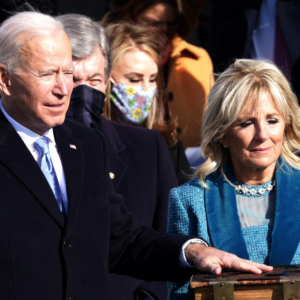This year, December 1st marks the 25th anniversary of World AIDS Day. World AIDS Day is an international day of observance that brings people from around the world together to raise awareness about HIV/AIDS, commemorate those that have lost their lives to the pandemic, and celebrate accomplishments—such as increased access to care and prevention services. This year’s World AIDS Day theme is “Shared Responsibility: Strengthening Results for an AIDS-Free Generation”. In the thirty-three years since the outbreak of this pandemic, the United States has made great strides in creating awareness around HIV/AIDS.
According to the World Health Organization, in 2012 there were approximately 35.3 million people in the world living with human immunodeficiency virus (HIV). Here in the U.S., the Centers for Disease Control (CDC) estimates there are nearly 1.1 million people infected with HIV, of which eighteen percent are unaware of their status; nearly 200,000 people. There are an estimated 50,000 new HIV infections in the United States each year. The epidemic in the U.S. is highly concentrated within certain populations, including men who have sex with men, communities of color, and sex workers. In 2010, the CDC found a connection between HIV infection and rates of poverty. A survey of 9,000 self-identified heterosexual individuals living in high-poverty areas of twenty-three U.S. cities reported HIV prevalence at nearly twenty times the rate of their peers living above the poverty line.
 The rollout of the Patient Protection and Affordable Care Act (ACA) is incredibly important for people living with HIV/AIDS (PLWHA) as it addresses barriers to care and increasing prevention programs consistent with President Obama’s National HIV/AIDS Strategy (NHAS). Under the Obama administration, the White House Office of National HIV/AIDS Policy announced the country’s first ever NHAS in July 2010. The goals for NHAS are to reduce new HIV infections, increase access to care and improve health outcomes for people living with HIV, and reduce HIV-related health disparities. Though the NHAS requires government coordination, in order to be successfully implemented, local governments, community based organizations, and other stakeholders must work together to meet the needs of those at-risk. It is at the local level where HIV testing, treatment, and intensive wrap-up services must be coordinated to reach vulnerable populations.
The rollout of the Patient Protection and Affordable Care Act (ACA) is incredibly important for people living with HIV/AIDS (PLWHA) as it addresses barriers to care and increasing prevention programs consistent with President Obama’s National HIV/AIDS Strategy (NHAS). Under the Obama administration, the White House Office of National HIV/AIDS Policy announced the country’s first ever NHAS in July 2010. The goals for NHAS are to reduce new HIV infections, increase access to care and improve health outcomes for people living with HIV, and reduce HIV-related health disparities. Though the NHAS requires government coordination, in order to be successfully implemented, local governments, community based organizations, and other stakeholders must work together to meet the needs of those at-risk. It is at the local level where HIV testing, treatment, and intensive wrap-up services must be coordinated to reach vulnerable populations.
Achieving the goals of the NHAS would be impossible without the implementation of the ACA. The ACA will increase health care coverage for the 1.1 million infected with HIV. States that have elected to expand Medicaid coverage, a Federal government subsidized health insurance program for low-income individuals and families, will cover up to sixty percent of the uninsured patients that are currently receiving assistance from state HIV programs. Medicaid expansions will cover all health related costs for PLWHAs, not just their HIV/AIDS treatments; this includes doctor’s visits, hospital care, preventative services, and prescription drugs.
Furthermore, Medicaid coverage will be available for all low-income individuals whose annual income is up to 133% of the federal poverty line (about $14,400 for an individual and $29,300 for a family of four) regardless of where they live. Medicaid expansion under the ACA will also eliminate eligibility requirements. In the past, even very poor HIV patients were ineligible for Medicaid unless their disease developed into AIDS. With the ACA rollout, insurance companies will not be able to deny coverage to individuals with pre-existing conditions or charge them higher rates. According to a study conducted by the Kaiser Family Foundation, thirty percent of HIV infected people are uninsured. By January 2014, all insurance companies will be required to provide healthcare coverage to PLWHAs eliminating high-risk insurance coverage.
 The ACA will also have an effect on the federally funded Ryan White Comprehensive AIDS Resources Emergency (CARE) Act – the largest federally funded program in the United States for PLWHAs and has been reauthorized by Congress four times since it was enacted in 1990. In the past, the Ryan White Program has served as a last resort for low-income individuals that have limited or no coverage to provide HIV-related services. Many patients covered under the Ryan White Program will receive coverage through Medicaid expansion or state health exchanges, hence, making them ineligible to use Ryan White Program funding to access care services. Many states are questioning whether the program will be needed in 2014. In spite of the expanded coverage options under the ACA, it is critical for the federal government to continue to fund the Ryan White Program. The Kaiser Family Foundation estimates that forty three percent of PLWHAs live in states that are not expanding Medicaid. Hence, there is still a great need to link people to care and address their barriers to care. The implementation of the ACA in 2014 will have a significant impact on PLWHAs in the United States.
The ACA will also have an effect on the federally funded Ryan White Comprehensive AIDS Resources Emergency (CARE) Act – the largest federally funded program in the United States for PLWHAs and has been reauthorized by Congress four times since it was enacted in 1990. In the past, the Ryan White Program has served as a last resort for low-income individuals that have limited or no coverage to provide HIV-related services. Many patients covered under the Ryan White Program will receive coverage through Medicaid expansion or state health exchanges, hence, making them ineligible to use Ryan White Program funding to access care services. Many states are questioning whether the program will be needed in 2014. In spite of the expanded coverage options under the ACA, it is critical for the federal government to continue to fund the Ryan White Program. The Kaiser Family Foundation estimates that forty three percent of PLWHAs live in states that are not expanding Medicaid. Hence, there is still a great need to link people to care and address their barriers to care. The implementation of the ACA in 2014 will have a significant impact on PLWHAs in the United States.
As we look to the future, we must address the fundamental barriers to care from a social, legal, and economic perspective in order to better serve those affected, and ultimately achieve an AIDS-free generation. Hopefully, through President Obama’s National HIV/AIDS Strategy and Patient Protection and Affordable Care Act, we will be able to exemplify and succeed at our commitment to achieving an AIDS-free generation.





